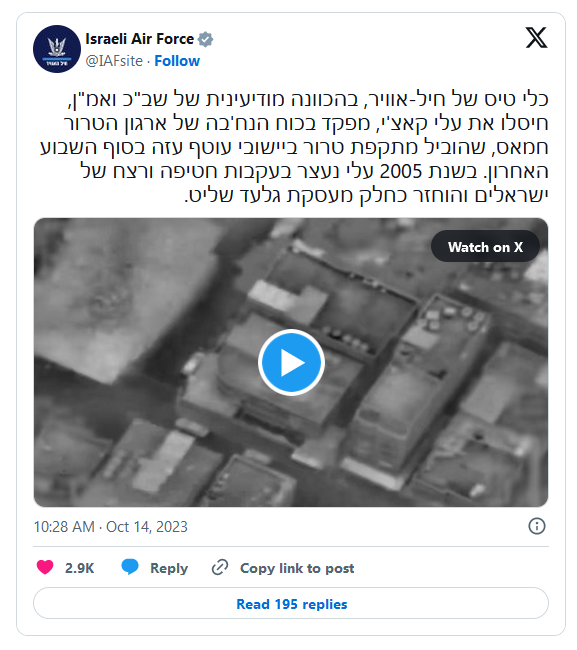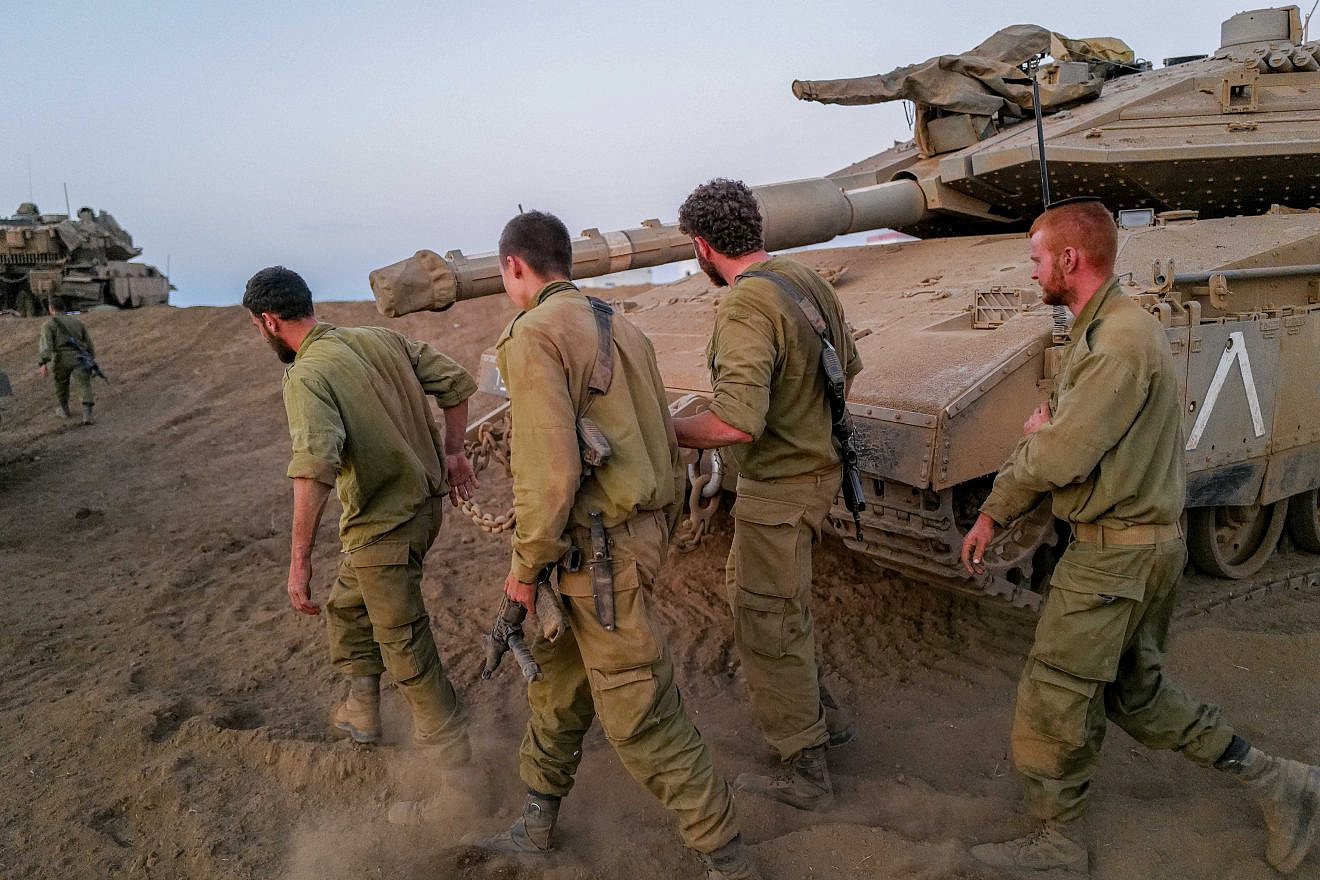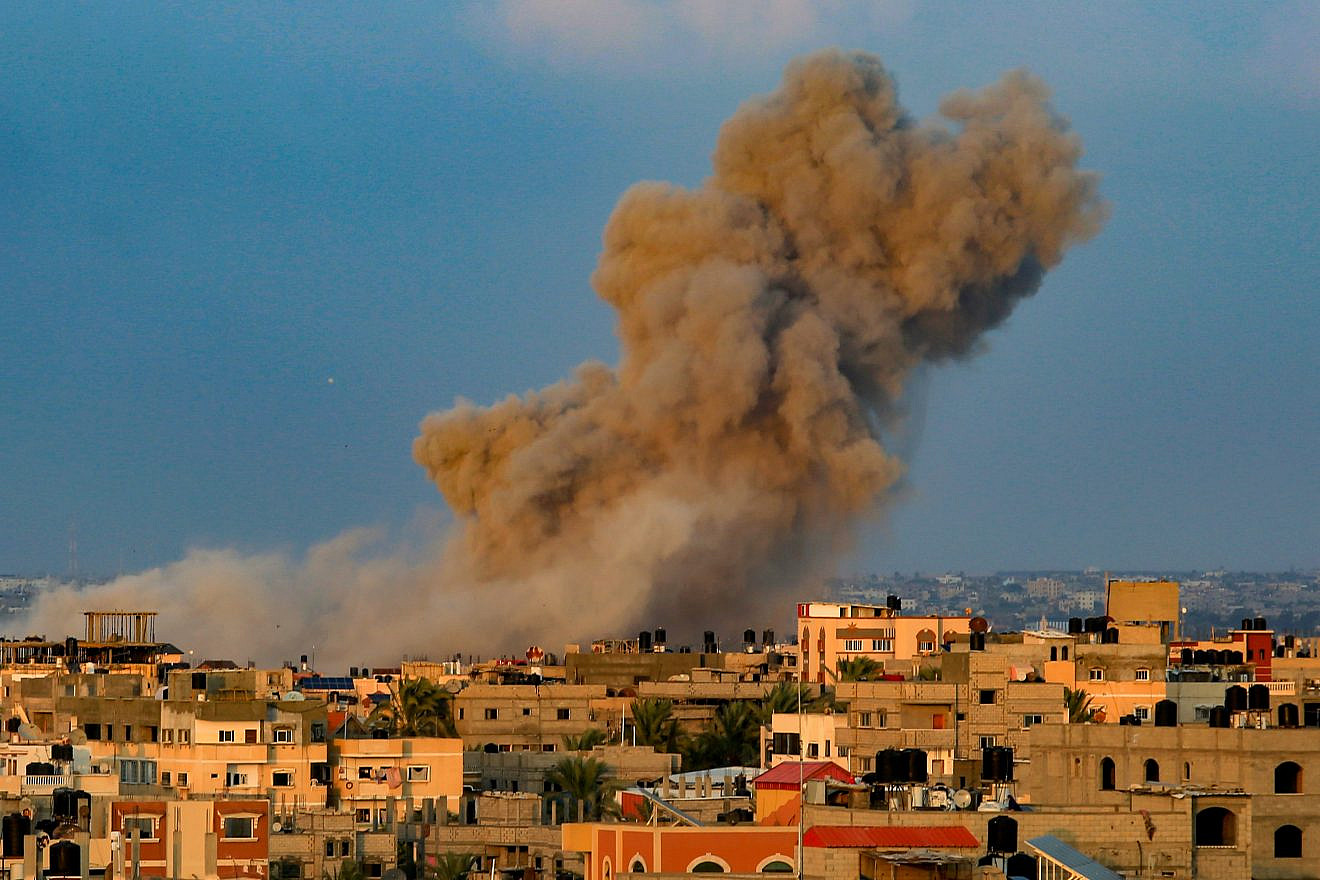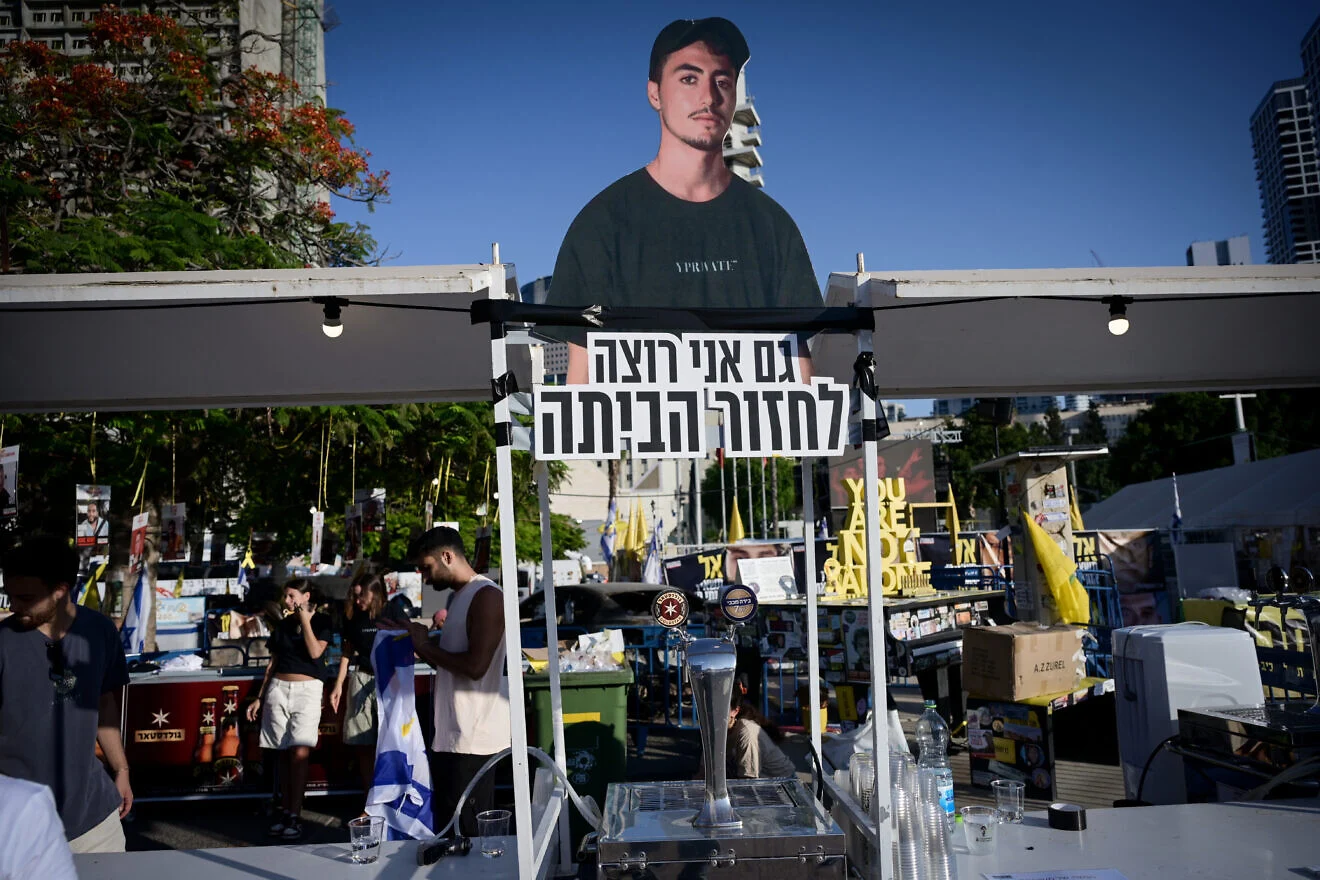Smoke rises after Israeli air strikes in Rafah, in the southern Gaza Strip, Oct. 14, 2023. Photo by Abed Rahim Khatib/Flash90.
By Joshua Marks
The Israeli Air Force announced on Saturday that it had killed the head of Hamas’s “Nukhba” forces, Ali Qadi, who led the Oct. 7 massacre of southern Israeli communities. The IAF shared video of the strike on the Hamas base in which Qadi was located.
A few hours later, Israeli forces killed Bilal al Kedra, the commander of the Nukhba forces in Khan Younis, who the IDF said was responsible for the massacres in Kibbutz Nirim and Kibbutz Nir Oz.
Hamas and Palestinian Islamic Jihad terror operatives were also killed in the strike, the IDF said.
Hamas’s Oct. 7 terror assault claimed the lives of more than 1,400 people and left some 3,500 wounded, making it the deadliest attack in Israeli history.
Hamas’s elite “Nukhba” commandos were one of the leading forces that infiltrated Israeli communities on the morning of Oct. 7—going on a murderous rampage and taking more than 150 hostages back to Gaza.
Earlier on Saturday, the IDF confirmed it had also killed Murad Abu Murad, the leader of Hamas’s aerial forces, who played a large role in the coordinated slaughter of Israeli civilians and soldiers.

The IDF said it struck more than 100 targets in Zaytun, Khan Younis and Jabaliya overnight Saturday—day eight of “Operation Swords of Iron.”
“These strikes impacted the capabilities of the Hamas terrorist organization, by targeting its operational command centers, military compounds, dozens of launchers, anti-tank missile launch posts and observation posts. Furthermore, operational command centers belonging to the Islamic Jihad terrorist organization were struck,” the IDF said in a statement.
Israel prepares for ground invasion of Gaza
The continued air strikes come amid preparations for a major ground offensive in the Gaza Strip, with the IDF saying that hundreds of thousands of reservists were readying for the surge against the Hamas terror group, which the army said could include “combined and coordinated strikes from the air, sea and land.”
The voluntary evacuation of the 35,000 residents of the Gaza border town of Sderot was set to continue on Sunday ahead of the ground invasion, Hebrew media reported. The residents are being temporarily relocated to hotels in Eilat and Jerusalem, and possibly also Tel Aviv, according to the reports.
Israel plans to target Gaza City and Hamas leadership, The New York Times reported on Saturday, citing three senior Israeli military officials.
The reported plan involves sending 10,000 troops into the Palestinian coastal enclave in what is expected to be Israel’s biggest ground invasion since the 2006 Lebanon War and the first time that the IDF has attempted to at least temporarily capture and hold territory in the Strip since 2008.
Israel has not formally announced a major ground incursion, although the IDF confirmed that infantry and tanks had conducted “localized raids” in the Gaza Strip on Friday and Saturday.
The goal of the operation will be “the rout of Hamas and the elimination of its leaders after the slaughter they perpetrated,” IDF Spokesman Rear Adm. Daniel Hagari said on Saturday.
Following Israel’s war on Hamas, “This organization will no longer rule Gaza, militarily or politically,” Hagari added.
IDF spokesman Lt. Col. Richard Hecht said that the operation will particularly focus on killing Hamas leader Yahya Sinwar, whom Israel holds responsible for the Oct. 7 atrocities.
“That man is in our sights,” Hecht said. “He’s a dead man walking, and we will get to that man.”
Rockets from Syria hit in Israel
On Saturday night, two projectiles launched from Syria struck open territory, causing no injuries or damage, according to the IDF. Israeli artillery shelled the source of the fire in Syrian territory.
An interceptor was also launched towards a suspicious target that crossed from Lebanon into Israeli territory, said the IDF, adding that the incident was “under review.”
Iranian minister warns against Gaza incursion
Iran’s foreign minister on Saturday called for Israel to halt its military offensive against Hamas in the Gaza Strip or risk a wider regional conflict.
Speaking from Beirut, where he met with Hezbollah leaders, Hossein Amir-Abdollahian said that if Iran’s terror proxy in Lebanon joined the fight against Israel it would cause a “huge earthquake” for the Jewish state.
Amir-Abdollahian met later on Saturday with Hamas leader Ismail Haniyeh in Doha, Qatar. The terror leader has an office in Qatar under the protection of the Gulf Arab country’s government.

Tensions high on the Lebanon border
Tensions on Israel’s northern border have escalated further since the start of “Operation Swords of Iron,” with communities on edge following a series of rocket and infiltration alerts in recent days.
One person was killed and three wounded on Sunday by an anti-tank missile strike on the northern Israeli town of Shtula that was claimed by the Hezbollah terror group.
The Israel Defense Forces said that it hit the source of the missile fire with artillery. The IDF was also striking Lebanese territory in response to additional anti-tank missile fire towards an IDF military post on the Lebanese border.
Following the attack, the IDF declared the area within 2.5 miles of the Lebanese border a closed military zone and ordered citizens residing within 1.25 miles (2 km.) of the border to remain close to shelters.
“The IDF clarifies that entering the area is strictly prohibited and asks the public to be vigilant and not enter the area.”
On Sunday morning, a rocket siren sounded in the northern community of Sde Eliezer, which the IDF said was due to an Iron Dome missile being fired at a “suspicious target.”

IDF Armored Corps forces at a staging area near the border with Lebanon, Oct. 14, 2023. Photo by Michael Giladi/Flash90.
On Saturday afternoon, Hezbollah shelled Israeli military positions in the Mount Dov area.
“Following the initial report of launches towards Mount Dov, about 30 mortar shells were identified that were launched towards Israeli territory, some of which crossed into our territory,” the military confirmed in a statement. The IDF fired on the source of the mortar shells.
During the exchange, troops spotted a terror squad preparing to fire an anti-tank missile across the border. An Israeli drone attacked the terrorists, the IDF said.
Hezbollah claimed responsibility for the attack, confirming it had fired guided missiles and mortars. In a communiqué, the Iran-backed terrorist group said it attacked a “surveillance and monitoring center” and destroyed IDF equipment.
The incident came hours after the IDF killed three terrorists attempting to cross the northern border. The army shared a video of the incident on X (formerly Twitter), saying that a “terrorist cell that tried to enter Israel from Lebanon” had been eliminated via drone strike.
U.S. sending second carrier group to Israel

USS Dwight D Eisenhower. U.S. Navy photo by Miguel A. Contreras/Wikimedia Commons.
The United States is sending a second aircraft carrier to the waters of the eastern Mediterranean in a show of force to deter Hezbollah and other Iranian terror proxies, ABC News reported.
The USS Eisenhower Carrier Strike Group will be ordered to international waters off the coast of Israel to join the USS Gerald R Ford CSG that positioned there following the Oct. 7 terror assault. The USS Gerald R Ford is the U.S. Navy’s newest vessel, the world’s largest aircraft carrier and the largest warship ever constructed.
Source: JNS


































